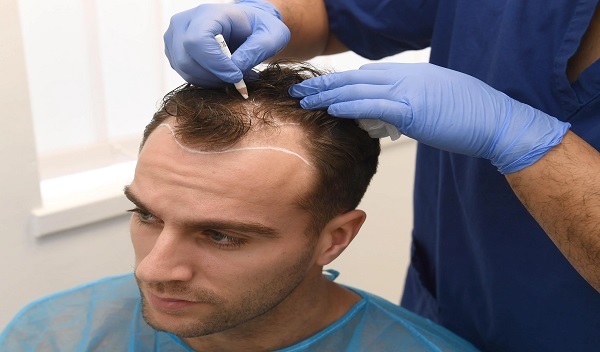Undergoing a Hair Transplant in Islamabad is a significant step toward regaining a fuller head of hair and renewed self-confidence. While the procedure itself is relatively safe and minimally invasive, the recovery period plays a critical role in determining the final outcome. A fast and smooth recovery not only ensures better results but also minimizes discomfort, risk of infection, and downtime.
In this comprehensive guide, we’ll explore practical tips for a speedy and complication-free recovery after a hair transplant. These suggestions will help you get back to your routine faster while ensuring your new hair follicles settle well and start growing naturally.
1. Follow Your Surgeon’s Post-Operative Instructions Carefully
Your recovery begins the moment the procedure ends. The first and most crucial step is to strictly follow the post-operative care guidelines provided by your surgeon. These instructions are tailored to your specific case and may include how to:
- Wash your scalp
- Sleep without disturbing grafts
- Take prescribed medications
- Avoid specific activities and products
Ignoring these instructions may delay healing or even result in transplant failure.
2. Avoid Touching or Scratching the Scalp
In the days following your procedure, your scalp may feel itchy or uncomfortable. While this is a normal part of healing, resist the urge to touch, scratch, or rub your scalp. Newly implanted follicles are delicate and can be dislodged easily in the first 7–10 days. Scratching also increases the risk of introducing bacteria, which could lead to infection.
3. Sleep in an Elevated Position
For the first week after your hair transplant, you should sleep with your head elevated at a 30–45-degree angle using pillows. This reduces swelling, improves blood flow, and prevents friction between your head and the pillow that might damage grafts. Avoid sleeping on your stomach or sides during this critical period.
4. Avoid Strenuous Physical Activities
Exercise, heavy lifting, and other forms of strenuous activity should be avoided for at least two weeks. These activities can increase blood pressure and cause sweating, which might irritate the scalp or increase the chances of infection. Light walking is generally fine after a few days, but always consult your doctor before resuming your regular workout routine.
5. Use Saline Sprays and Mild Shampoos
Your surgeon will likely recommend using a saline spray or a mild, non-medicated shampoo to keep the scalp clean and hydrated. Saline helps prevent crust formation and promotes healing. Do not use shampoos containing harsh chemicals, alcohol, or strong fragrances until your doctor advises.
6. Protect Your Scalp from Sun Exposure
Newly transplanted follicles are highly sensitive to ultraviolet (UV) rays. Direct sun exposure can damage the scalp, slow healing, and affect hair growth. Wear a loose-fitting hat if you must go outdoors, and avoid the sun completely for at least two weeks.
7. Refrain from Smoking and Alcohol
Smoking reduces oxygen levels in the blood, which is critical for healing. Alcohol, on the other hand, can thin the blood and increase the risk of bleeding. Both substances should be avoided for at least a week post-surgery, ideally longer, to optimize your recovery and results.
8. Manage Swelling with Cold Compresses (if approved)
Some patients experience mild swelling in the forehead and around the eyes. If your surgeon allows, a cold compress can be applied (not directly on the transplant site) to reduce swelling. Make sure to consult your clinic first, as incorrect usage might damage grafts.
9. Stay Hydrated and Maintain a Healthy Diet
Hydration plays an essential role in skin and tissue recovery. Drinking adequate water and eating a balanced, protein-rich diet provides your body with the necessary nutrients to heal quickly and support hair growth. Focus on foods rich in:
- Vitamins A, C, D, and E
- Biotin and Zinc
- Omega-3 fatty acids
10. Avoid Wearing Tight Headgear
Tight hats, helmets, or any headgear that puts pressure on your scalp can disrupt the transplanted grafts. Wait at least two weeks before wearing tight-fitting accessories. If you need to go outdoors, opt for a loose, soft cap that doesn't touch the treated areas.
11. Don’t Panic During the Shedding Phase
Within 2–4 weeks after your transplant, the newly implanted hair may begin to shed — a completely normal process known as "shock loss." This can be alarming, but it's part of the recovery process. The hair follicles remain in the scalp and will begin producing new, permanent hair after a few months.
12. Stay Patient and Positive
Hair growth after a transplant is not immediate. It typically begins three to four months post-procedure, and full results can take up to 12 months or longer. Being patient, following all recovery steps, and staying in touch with your clinic will ensure a successful journey.
Common Mistakes That Delay Recovery
Avoid these pitfalls to ensure a fast and safe recovery:
- Using unapproved hair products
- Resuming workouts too early
- Sleeping without head elevation
- Ignoring signs of infection like pus, severe redness, or fever
If you experience any unusual symptoms, contact your clinic immediately.
Post-Transplant Follow-Up Visits
Your follow-up appointments are critical for:
- Monitoring healing progress
- Receiving clearance to resume activities
- Addressing any concerns or complications
- Getting guidance on future hair care and products
Always attend scheduled check-ups and keep your clinic informed of any changes.
Conclusion
A hair transplant is a transformative procedure, but the success largely depends on how well you manage your recovery. By following these expert tips — from avoiding physical strain to maintaining a healthy diet and protecting your scalp — you can significantly shorten your healing time and enhance the final outcome.
If you're planning a Hair Transplant in Islamabad, choosing an experienced and reputable clinic is the first step. The Dynamic Clinic offers personalized treatment plans, advanced surgical methods, and dedicated post-operative care to help you achieve long-lasting and natural-looking results.





Comments